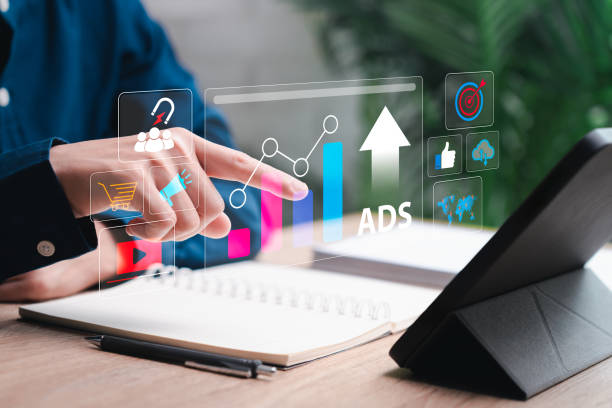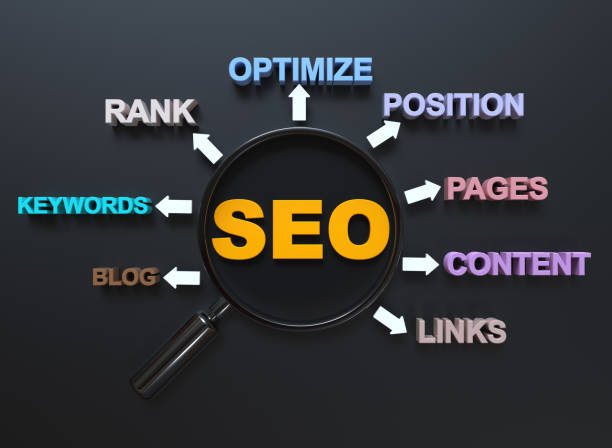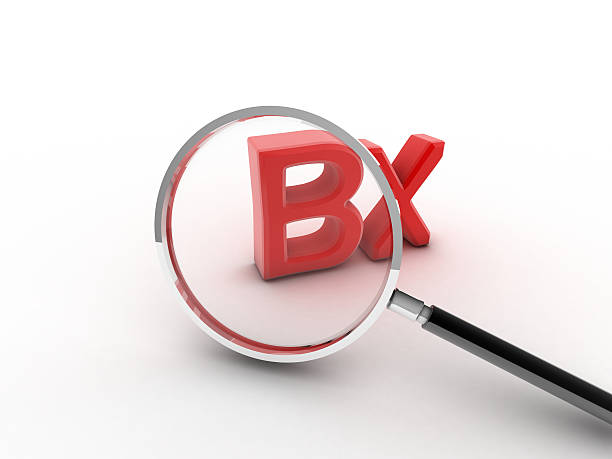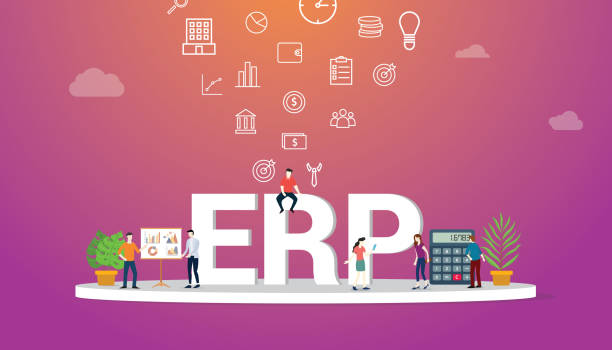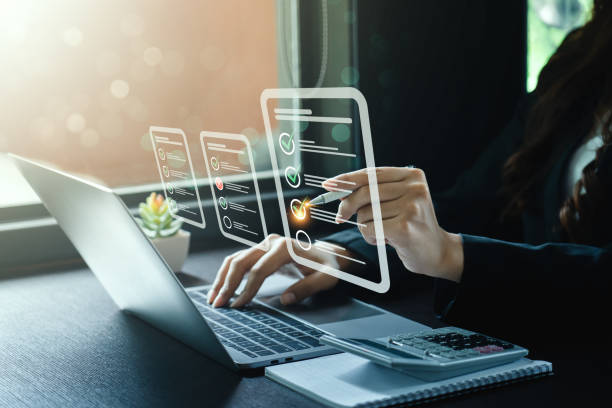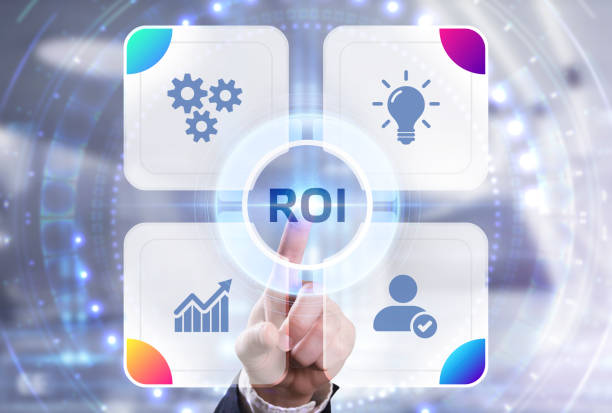What is On-Page SEO and Why Does It Matter?
On-page SEO refers to a set of actions taken to optimize website pages to improve their ranking in search engine results.
These actions include optimizing content, title tags, meta descriptions, URL structure, and other page elements.
The importance of on-page SEO stems from the fact that search engines like Google use these factors to better understand the content of a page and its relevance to a user’s search query.
A strong on-page SEO strategy helps search engines better understand your content, and as a result, your site’s ranking in search results improves.
This means increased organic traffic, increased brand awareness, and ultimately, increased sales and revenue.
SEO is not limited to on-page SEO, but also includes off-page SEO and technical SEO, but on-page SEO plays a vital role in the overall success of the SEO strategy.
By making appropriate optimizations in on-page SEO, you can ensure that your website is attractive to search engines and useful for users. Simply put, on-page SEO is a fundamental foundation for success in the competitive online world.
Note that on-page SEO is an ongoing process and requires constant updating and improvement.
Given the changes in search engine algorithms, you should always keep your on-page SEO strategies up to date in order to maintain your ranking in search results and stay ahead of the competition.
Did you know that 94% of first impressions of a company are related to its website design?
Rasaweb helps you create the best first impression by providing professional corporate website design services.
✅ Create a professional and reliable image of your brand
✅ Attract potential customers more easily and improve online positioning
⚡ Get a free consultation on corporate website design
Keyword Research and Choosing the Best Ones
Keyword research is the process of identifying the words that users use to search for information in search engines.
This process helps you understand what users are looking for and how you can optimize your content to be better seen in search results.
Various tools such as Ahrefs, Moz Keyword Explorer, and Ubersuggest are available to help you in this area.
To choose the best keywords, you need to pay attention to two main factors: search volume and competition.
Search volume shows how many users search for a specific keyword per month.
Competition shows how many other websites rank for the same keyword.
The best keywords are those that have a high search volume and low competition.
Long-tail keywords are often good options because they have less competition and more specifically target users’ needs.
By choosing the right keywords and using them in your content, you can attract more organic traffic to your website and improve your ranking in search results.
Remember that keyword research is an ongoing process and you should regularly identify new keywords and add them to your SEO strategy.
On-page SEO depends largely on the correct choice of keywords.
So be careful in this step.
Optimizing Titles and Meta Descriptions to Attract Clicks
Title Tags and Meta Descriptions are two important elements in on-page SEO that appear in search results and play an important role in attracting user clicks.
The title should briefly and accurately describe the content of the page and include the main keyword.
The title length should be between 50 and 60 characters to be fully displayed in search results.
The meta description should also provide an attractive summary of the page’s content and encourage users to click on your link.
The length of the meta description should be between 150 and 160 characters.
To optimize titles and meta descriptions, use relevant keywords, but avoid overuse of keywords.
The title and meta description should be written for users, not just for search engines.
Use attractive and encouraging phrases to grab users’ attention.
The title and meta description of each page should be unique and match the content of the page.
By optimizing titles and meta descriptions, you can increase your click-through rate (CTR) and attract more traffic to your website.
On-page SEO is heavily influenced by these two factors.
Finally, remember that on-page SEO is a dynamic process and needs constant review and updating.
Check the title and meta descriptions regularly and improve them if necessary.
By doing these things, you can improve your website’s on-page SEO and increase your ranking in search results.
| Element | Best Practices |
|---|---|
| Title Length | 50-60 characters |
| Keywords | Targeted and relevant use |
| Attractiveness | Use of encouraging phrases |
| Uniqueness | Be different for each page |
Click here to preview your posts with PRO themes ››
| Element | Best Practices |
|---|---|
| Meta Description Length | 150-160 characters |
| Summary | Attractive summary of content |
| Encouragement | Encourage to click |
| Coordination | Match the content of the page |
Optimized and User-Friendly URL Structure
URL structure is another important factor in on-page SEO.
URLs should be short, descriptive, and contain keywords.
An optimized URL helps users and search engines easily understand the topic of the page.
Avoid using long and complex URLs that contain meaningless numbers and letters.
URLs should be separated by a hyphen (-), not an underscore (_).
With the optimized URL structure, you can improve your site’s on-page SEO and increase your ranking in search results.
A suitable URL structure has a great impact on user experience as well.
In addition, keep in mind that URLs should be consistent with your overall website structure.
Avoid creating duplicate URLs and make sure that each URL points to a unique page.
Also, using SSL (HTTPS) for your website security has a positive impact on on-page SEO.
Finally, remember that on-page SEO is a comprehensive process and all the factors mentioned interact with each other.
By optimizing all these factors, you can improve your website’s ranking in search results and attract more organic traffic.
Are you annoyed by losing customers because of the old appearance or low speed of your online store site? Rasaweb’s expert team solves these problems with professional online store design!
✅ Increase customer trust and brand credibility
✅ Amazing speed and excellent user experience
Get a free consultation with Rasaweb now ⚡
Optimizing Images for SEO and User Experience
Image optimization is an important aspect of on-page SEO that is often overlooked.
High-quality images can improve user experience and make your content more attractive.
However, large images can slow down page loading speed and have a negative impact on on-page SEO.
To optimize images, you must first reduce the image file size without significantly reducing their quality.
Use image formats such as JPEG or WebP that are suitable for image compression.
Also, use the ALT tag to describe the images.
The ALT tag helps search engines understand the content of the image and rank in image search results.
The ALT tag should be descriptive, concise, and contain relevant keywords.
The file name of the images should also be descriptive and contain keywords.
By optimizing images, you can improve page loading speed, enhance user experience, and increase your ranking in image search results.
Do not underestimate visual on-page SEO.
In addition, the use of Responsive Images is also very important.
Responsive images automatically adjust their size to the user’s device screen size and provide a better user experience.
By using responsive images, you can ensure that your website is displayed correctly on all devices and your site’s on-page SEO is improved.
Content Optimization with a Focus on Quality and Relevance
Content is king! This famous sentence in the world of SEO clearly shows the importance of content in on-page SEO.
Quality and relevant content can attract a lot of organic traffic to your website and improve your ranking in search results.
To optimize content, you must first make sure that your content is unique, valuable, and relevant to users’ needs.
Avoid writing duplicate content or copying from other websites.
Your content should answer users’ questions and needs and provide useful information.
Try to update your content regularly and add new and fresh content to your website.
By providing quality content, you can gain the trust of users and turn them into regular visitors to your website.
In addition, your content should also be optimized for search engines.
Use relevant keywords in titles, subtitles, paragraphs, and image ALT tags.
But avoid overuse of keywords, as this can have a negative impact on on-page SEO.
Your content should be readable and understandable.
Use short paragraphs and simple sentences.
Use images, videos, and other multimedia elements to make your content more attractive.
By optimizing content, you can improve your website’s on-page SEO and increase your ranking in search results.
Also, internal linking is an important aspect of content optimization.
By linking to related pages on your website, you can help users and search engines better understand your website structure and identify more important pages.
Internal linking can help improve the ranking of your pages in search results and attract more traffic to your website.
Remember that on-page SEO is an ongoing process and requires effort and follow-up.
Click here to preview your posts with PRO themes ››
Internal Linking and Site Navigation
Internal linking is one of the most important on-page SEO strategies that helps improve website structure and distribute page authority.
By creating internal links between related pages, you can help users and search engines easily navigate your website and find more important pages.
Internal linking increases the amount of time users spend on the website, reduces bounce rate, and improves page ranking in search results.
For internal linking, use descriptive and relevant Anchor Text.
Avoid linking to unrelated pages or using general anchor texts such as “click here.”
Internal links should be naturally placed within the page content and improve the user experience.
Internal linking is a fundamental step in on-page SEO.
In addition, site navigation also plays an important role in on-page SEO.
A simple and logical navigation structure helps users and search engines easily navigate your website and find the pages they are looking for.
Avoid creating complex and confusing menus.
Use clear and descriptive categories.
Make sure that all pages of your website are accessible through navigation.
An optimized navigation can improve user experience and increase your ranking in search results.
Strengthen on-page SEO with proper site navigation.
| Element | Important Tips |
|---|---|
| Anchor Text | Descriptive and relevant |
| Page Links | Link to related pages |
| Naturalness | Links should be natural |
| User Experience | Improve user experience |
| Element | Important Tips |
|---|---|
| Navigation Structure | Simple and logical |
| Categorization | Clear and descriptive |
| Accessibility | Access to all pages |
| Improvement | Improve user experience and SEO |
Optimizing Page Loading Speed
Page loading speed is one of the important factors in on-page SEO and user experience.
Users expect website pages to load quickly, and delays in page loading can lead to reduced user satisfaction and increased bounce rate.
Search engines also consider page loading speed as a ranking factor, and websites that have faster loading speeds rank better in search results.
To optimize page loading speed, you can use various tools such as Google PageSpeed Insights to identify page loading speed issues and find appropriate solutions to fix them.
Some of the solutions for optimizing page loading speed include: compressing images, reducing the size of CSS and JavaScript files, using CDN (Content Delivery Network), enabling browser caching, and optimizing website code.
By implementing these solutions, you can improve page loading speed, enhance user experience, and improve your website’s on-page SEO.
Optimizing loading speed is a vital aspect of on-page SEO.
Finally, remember that on-page SEO is an ongoing process and needs constant review and updating.
Check the page loading speed regularly and improve it if necessary.
By doing these things, you can improve your website’s on-page SEO and increase your ranking in search results.
Are you dissatisfied with the low sales of your online store site?
Rasaweb is your solution for having a professional and high-selling online store site.
✅ Significant increase in sales and revenue
✅ Easy and enjoyable shopping experience for customers
⚡ Get a free consultation from Rasaweb now!
Responsive Design and Mobile Compatibility
Given the increasing use of mobile devices for internet searching, Responsive Design and mobile compatibility are critical factors in on-page SEO.
Websites with responsive design automatically adjust their size to the user’s device screen size and provide a better user experience.
Search engines also prioritize websites that are mobile-friendly in search results.
To ensure that your website is responsive, you can use Google’s Mobile-Friendly Test tool.
This tool shows you whether your website is optimized for mobile devices or not.
If your website is not responsive, you need to update your website design and use a responsive template.
Also, you should make sure that all elements of your website, such as images, videos, and forms, are displayed correctly on mobile devices.
Mobile compatibility is a basic requirement in on-page SEO.
Finally, remember that on-page SEO is a dynamic process and needs constant review and updating.
Check the responsive design and mobile compatibility regularly and improve it if necessary.
By doing these things, you can improve your website’s on-page SEO and increase your ranking in search results.
On-page SEO is improved with responsive design.
Using Structured Data Schema Markup
Structured Data (Schema Markup) helps search engines better understand the content of your website pages and display useful information in search results.
By using Schema Markup, you can provide information such as product name, price, rating, address, and phone number to search engines.
This information can be displayed in the form of Rich Snippets in search results and increase click-through rate (CTR) and your website traffic.
Using Schema Markup is an advanced technique in on-page SEO.
Click here to preview your posts with PRO themes ››
To use Schema Markup, you need to add the relevant codes to the HTML of your website pages.
You can use various tools such as Schema Markup Generator to generate Schema Markup codes.
After adding the codes, you can use Google’s Rich Results Test tool to check the validity of the codes.
By using structured data, you can improve your website’s on-page SEO and increase your ranking in search results.
On-page SEO improves with the help of structured data.
Finally, remember that on-page SEO is a comprehensive process and all the factors mentioned interact with each other.
By optimizing all these factors, you can improve your website’s ranking in search results and attract more organic traffic.
Frequently Asked Questions
| Question | Answer |
|---|---|
| What is On-page SEO? | On-page SEO refers to a set of actions that are performed within your website to improve its ranking in search engine results. This includes optimizing content, site structure, and HTML code. |
| Why is On-page SEO important? | On-page SEO helps search engines understand your page’s content and determine whether your content is relevant to searchers. This is the foundation of any successful SEO strategy. |
| What are the key elements of On-page SEO? | Page title (Title Tag), Meta Description, keyword usage, image optimization, heading structure (H1, H2, …), internal linking, and content quality are key elements. |
| How to optimize the page title (Title Tag)? | The page title should include the main keyword, be attractive and encouraging to click, and be between 50 and 60 characters (or appropriate pixels) long to be fully displayed in search results. |
| What role does Meta Description play in On-page SEO? | The meta description is a summary of the page’s content that is displayed below the title in search results. Although it does not directly affect ranking, it helps SEO by increasing click-through rate (CTR). |
| What is the importance of using heading structure (H1, H2, H3) in On-page SEO? | Headings structure the content of the page and make it easier to read. H1 is usually the main title of the page and should include the keyword. H2 and H3 are used to organize subsections and help search engines understand the content hierarchy. |
| How to use keywords effectively in content? | Keywords should be used naturally and logically throughout the content, including the introduction, body, and conclusion. Avoid over-filling keywords (Keyword Stuffing). |
| What are the steps to optimize images for On-page SEO? | Includes compressing images to reduce size, using descriptive file names, adding appropriate alternative text (Alt Text), and optimizing the image title and description. Alt Text is critical for accessibility and helping search engines understand the content of the image. |
| What is internal linking and what are its benefits? | Internal linking means creating a link from one page on your website to another page on the same website. This helps users easily navigate your site, distributes page authority throughout the site, and helps search engines better understand your site structure. |
| What is the importance of content quality in On-page SEO? | High-quality, accurate, comprehensive, and valuable content for users is the cornerstone of On-page SEO. Search engines prefer content that meets the needs of users. Quality content leads to longer dwell time and reduced bounce rate, which are positive SEO signals. |
And other services of Rasa Web advertising agency in the field of advertising
Smart advertising campaign: Transform customer acquisition with the help of optimizing key pages.
Smart brand identity: Designed for businesses looking to increase sales through attractive user interface design.
Smart brand identity: A dedicated service to grow sales based on attractive user interface design.
Smart customer journey map: A combination of creativity and technology to analyze customer behavior by customizing the user experience.
Smart Google Ads: A professional solution to increase site visits with a focus on optimizing key pages.
And over a hundred other services in the field of internet advertising, advertising consulting and organizational solutions
Internet Advertising | Advertising Strategy | Advertorials
Resources
ahrefs On-Page SEO Guide
,semrush On-Page SEO
,moz On-Page SEO Optimization
, Neil Patel On-Page SEO
? Ready to transform your business in the digital world? Rasaweb Afarin Digital Marketing Agency, specializing in WordPress website design and comprehensive online marketing strategies, paves the way for your success.
📍 Tehran, Mirdamad Street, next to Central Bank, South Kazerun Alley, Ramin Alley No. 6







